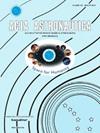用于空间安全问题中燃烧动力学建模的机器学习方法
IF 3.1
2区 物理与天体物理
Q1 ENGINEERING, AEROSPACE
引用次数: 0
摘要
燃烧是一个复杂的物理和化学过程,在对具有高能效和足够安全性的新型推进系统进行建模时,以及在对爆炸安全和灭火问题进行建模时,都要考虑到这一过程。对这一过程的基础研究是保证当前和未来太空飞行安全的关键因素之一。化学反应系统行为建模是一个复杂的计算问题。必须考虑到许多细节和过程,如多成分结构、扩散、湍流、化学转化等。化学动力学建模是计算最复杂的阶段。在本文中,我们考虑了利用神经网络近似模拟氢气-空气混合物爆炸的化学动力学问题。训练神经网络的数据集是根据窄通道中爆燃的数值建模结果,利用主成分分析法制备的。获得的神经网络结果表明,所提出的模型能够近似化学动力学过程,对压力、温度范围或所用时间步长的选择没有明显限制。本文章由计算机程序翻译,如有差异,请以英文原文为准。
Machine learning methods for modeling the kinetics of combustion in problems of space safety
Combustion is a complex physical and chemical process, which is considered both in the modeling of new propulsion systems with high energy efficiency and sufficient safety, and in the modeling of explosion safety and fire extinguishing problems. Fundamental research of this process is one of the key factors responsible for the safety of current and future space flights. Modeling the behavior of chemically reacting systems is computationally complex problem. It is necessary to take into account many details and processes, such as multicomponent structure, diffusion, turbulence, chemical transformations, etc. The modeling of chemical kinetics is the most computationally complex stage. In this paper, we consider the problem of approximating chemical kinetics for modeling the detonation of a hydrogen-air mixture using neural networks. The dataset for training the neural network were prepared using the principal component analysis from the results of numerical modeling of detonation in a narrow channel. The results of the obtained neural network showed that the presented model is capable of approximating chemical kinetics processes without significant restrictions on the range of pressure, temperature or the choice of the used time step.
求助全文
通过发布文献求助,成功后即可免费获取论文全文。
去求助
来源期刊

Acta Astronautica
工程技术-工程:宇航
CiteScore
7.20
自引率
22.90%
发文量
599
审稿时长
53 days
期刊介绍:
Acta Astronautica is sponsored by the International Academy of Astronautics. Content is based on original contributions in all fields of basic, engineering, life and social space sciences and of space technology related to:
The peaceful scientific exploration of space,
Its exploitation for human welfare and progress,
Conception, design, development and operation of space-borne and Earth-based systems,
In addition to regular issues, the journal publishes selected proceedings of the annual International Astronautical Congress (IAC), transactions of the IAA and special issues on topics of current interest, such as microgravity, space station technology, geostationary orbits, and space economics. Other subject areas include satellite technology, space transportation and communications, space energy, power and propulsion, astrodynamics, extraterrestrial intelligence and Earth observations.
 求助内容:
求助内容: 应助结果提醒方式:
应助结果提醒方式:


